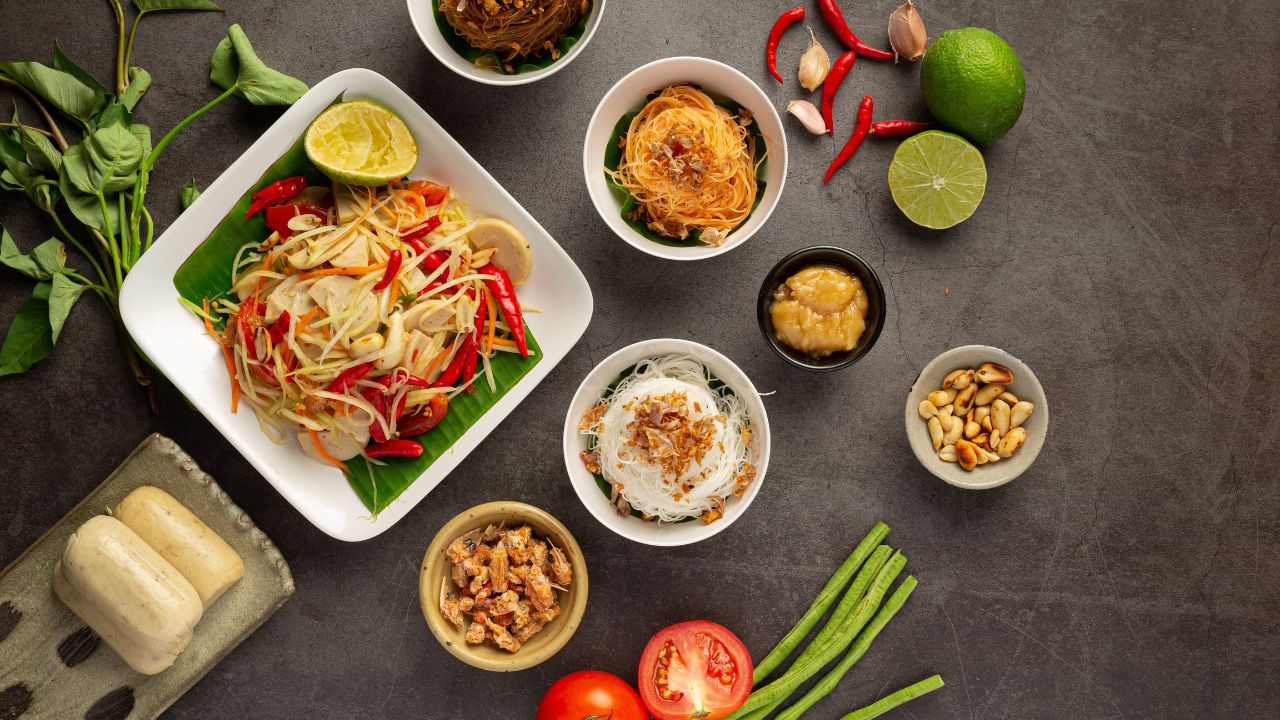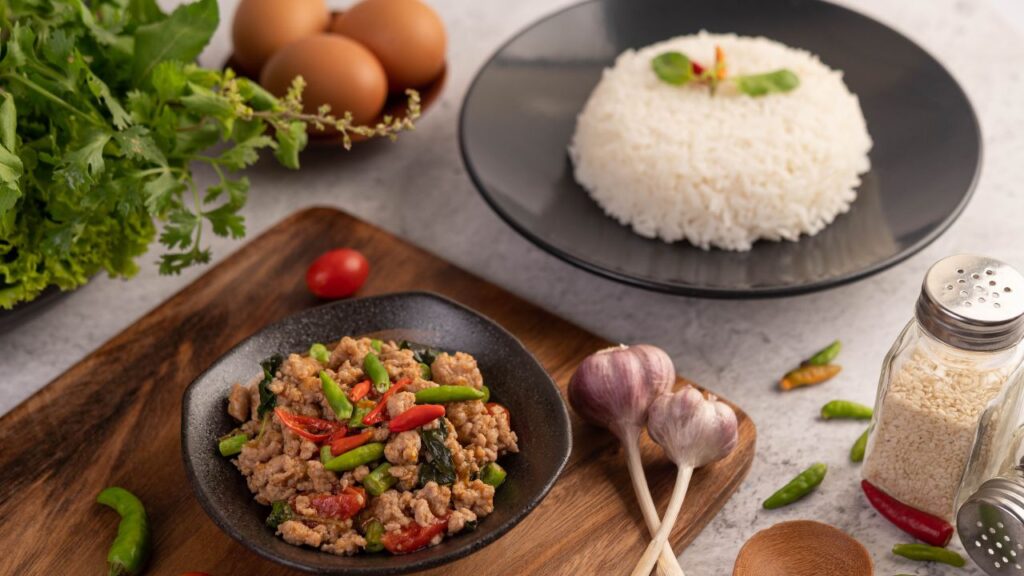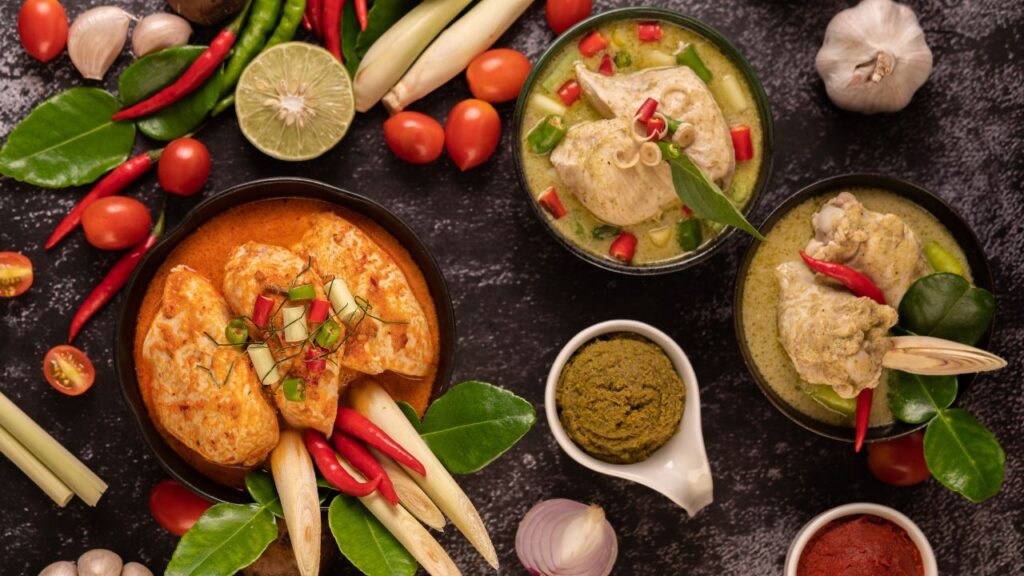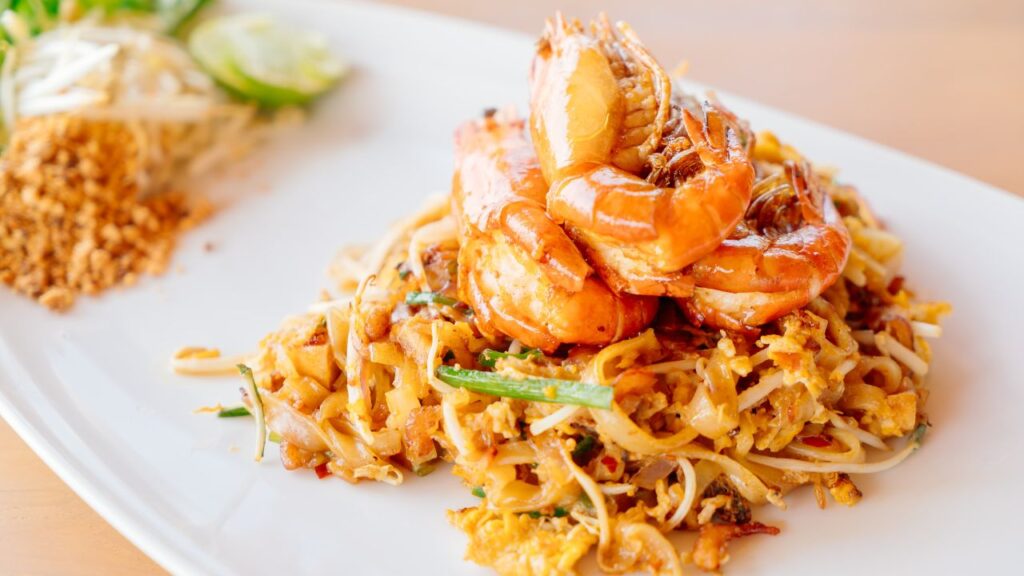Thai food is globally loved for its bold flavors, aromatic spices, and beautifully balanced dishes. From tangy soups to spicy salads and flavorful curries, Thai cuisine offers a symphony of tastes that satisfy the palate. But there’s one question that many health-conscious food lovers ask:
Is Thai food healthy?
The answer is yes — Thai food is not only delicious but can also be incredibly good for your body and mind when enjoyed the right way. In this article, we’ll explore the reasons why Thai food is considered one of the healthiest cuisines in the world, what makes it stand out nutritionally, and how to make healthy choices when dining on Thai dishes.
1. Abundance of Fresh Herbs and Vegetables
One of the strongest arguments for Thai food’s healthiness is its generous use of fresh herbs and vegetables. Thai dishes commonly feature:
-
Lemongrass – Aids digestion and fights inflammation
-
Galangal – Boosts immunity and supports gut health
-
Kaffir lime leaves – Detoxifying properties
-
Holy basil – Supports blood sugar control
-
Chili – Speeds up metabolism and adds antioxidants
-
Cilantro, mint, and Thai basil – Rich in vitamins and antioxidants
In addition to herbs, vegetables like bok choy, cabbage, carrots, long beans, and eggplant are staples in Thai cooking. Whether they’re stir-fried, tossed into curries, or added fresh in salads like Som Tum (papaya salad), they help keep Thai meals rich in fiber, vitamins, and minerals.
2. Lean Proteins and Seafood
Traditional Thai meals use lean protein sources such as:
-
Chicken
-
Shrimp
-
Tofu
-
Fish
-
Eggs
Seafood features heavily in Thai cuisine, providing omega-3 fatty acids and protein with fewer calories compared to red meat. Dishes like Tom Yum Goong (spicy shrimp soup) or Pla Nueng Manow (steamed fish with lime and garlic) offer light, protein-packed meals that support heart and brain health.
For plant-based eaters, tofu, tempeh, and legumes are often incorporated into curries and stir-fries, making Thai food versatile and inclusive of all diets.
3. Natural Spices and Immune-Boosting Ingredients
Thai cuisine relies on natural spices and medicinal ingredients, many of which are celebrated for their health-boosting properties:
-
Garlic – Antibacterial and heart-healthy
-
Turmeric – Powerful anti-inflammatory compound
-
Chili Peppers – High in capsaicin, which may help burn fat
-
Ginger – Eases nausea, aids digestion
-
Coconut milk – Though high in fat, it’s mostly medium-chain triglycerides (MCTs) which may boost energy metabolism
These ingredients not only flavor the food but also help boost the immune system, improve digestion, and reduce inflammation naturally.
4. Balance of Macronutrients
Many Thai dishes aim for balance — a mix of carbohydrates, proteins, and healthy fats in just the right proportions. For example:
-
A plate of Pad Kra Pao (stir-fried basil chicken) with rice and a fried egg contains a balanced mix of carbs, protein, and fats.
-
Som Tum combines fruits and vegetables with peanuts for protein and healthy fats.
-
Thai curries include coconut milk (fat), meat or tofu (protein), and are served with rice (carbs).
This well-rounded approach to eating helps keep you fuller for longer and supports blood sugar stability throughout the day.
5. Naturally Gluten-Free and Dairy-Free Options
Many traditional Thai dishes are naturally gluten-free and dairy-free, which is a huge plus for people with sensitivities or allergies. Unlike Western cuisines that rely heavily on dairy and wheat, Thai food uses:
-
Fish sauce and soy sauce (check labels for gluten-free versions)
-
Rice noodles and jasmine rice instead of wheat-based carbs
-
Coconut milk instead of cream or cheese
Popular dishes like Green Curry, Massaman Curry, or Pad Thai (made with rice noodles) can easily be made gluten-free with minor adjustments.
6. Portion Control and Shared Eating Culture
Thai culture encourages shared meals, where dishes are placed in the center and eaten family-style. This naturally leads to smaller portion sizes, as diners sample multiple dishes instead of consuming large single-portion entrees.
This style of eating promotes mindful eating and variety, helping you feel satisfied with less food — a great way to manage weight without restricting enjoyment.
7. Low-Sugar Options Are Readily Available
While some Thai dishes (especially desserts or sauces) may contain sugar, many savory Thai dishes are low in added sugars. Options like:
-
Stir-fried vegetables
-
Grilled meats with herbs
-
Clear soups like Tom Yum
-
Steamed fish with chili and lime
…are all low in sugar and full of natural flavor from herbs and spices.
If you’re watching your sugar intake, simply ask for less sugar or sauce on the side — Thai restaurants are usually very accommodating.
Healthiest Thai Dishes to Try
If you’re new to Thai food and want to eat well, here are some nutrient-packed, balanced dishes to try:
-
Tom Yum Goong – Spicy shrimp soup
-
Som Tum – Green papaya salad
-
Larb Gai – Spicy minced chicken salad
-
Pla Nueng Manow – Steamed lime fish
-
Pad Pak Ruam – Stir-fried mixed vegetables
-
Gaeng Keow Wan Gai – Green curry chicken (served with brown rice)
These dishes are flavorful, satisfying, and rich in nutrients without being overly heavy.
Conclusion: Is Thai Food Healthy?
Yes — Thai food is healthy, especially when you focus on dishes made with whole, fresh ingredients and minimal processing. The cuisine’s natural reliance on herbs, vegetables, lean proteins, and balanced flavors makes it one of the most nourishing options around.
By choosing wisely and being mindful of preparation methods, Thai food can absolutely support your health goals — while still delivering incredible flavor in every bite.
So next time you’re looking for a meal that’s delicious, exciting, and good for your body, consider Thai food. It’s proof that eating well doesn’t have to mean giving up bold taste.
Related article:






